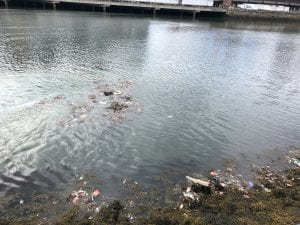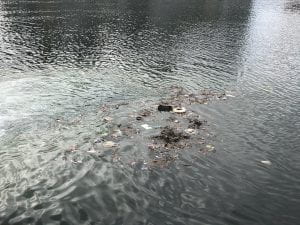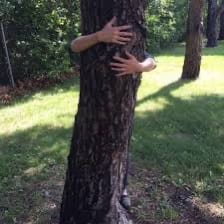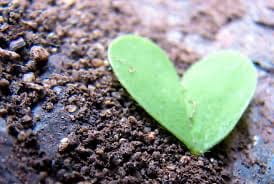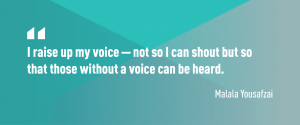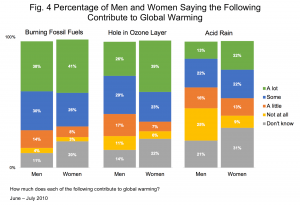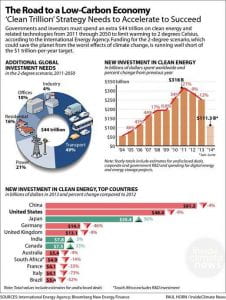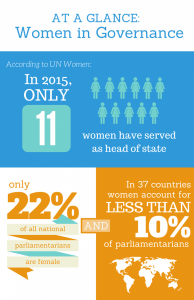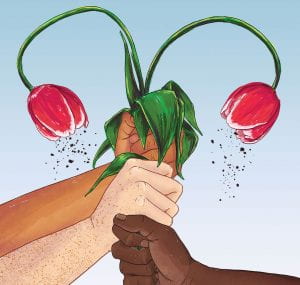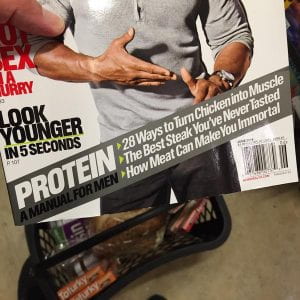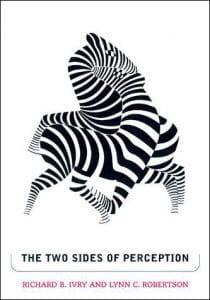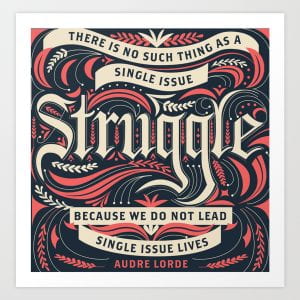 The ecofeminist interconnected web perspective discusses the lack of “intersectionality” in some of the writings of feminist scholars. That is, the differences any woman/ feminists (regardless to race, gender, class, etc.), have in connection to ecology and their perspective on “discrimination, oppression, and identity of women” (King, 64). For instance, an ecofeminist who was born and grew up in a Western country would have a different ecofeminist perspective, than that of one who was born in the Global South. In the same breath, women in the Global South also have a responsibility to acknowledge differences in their own groups. Within this stance, ecofeminist intersectionality then spreads its web on to a “political perspective” where ecofeminists might advocate for democracy, freedom or solidarity. In the same arena where this is happening, we would see women of different social structures, that would form a “socioeconomic perspective”. As it follows, women are interconnected for many different reasons but when it comes to intersectionality, these reasons become separate issues.
The ecofeminist interconnected web perspective discusses the lack of “intersectionality” in some of the writings of feminist scholars. That is, the differences any woman/ feminists (regardless to race, gender, class, etc.), have in connection to ecology and their perspective on “discrimination, oppression, and identity of women” (King, 64). For instance, an ecofeminist who was born and grew up in a Western country would have a different ecofeminist perspective, than that of one who was born in the Global South. In the same breath, women in the Global South also have a responsibility to acknowledge differences in their own groups. Within this stance, ecofeminist intersectionality then spreads its web on to a “political perspective” where ecofeminists might advocate for democracy, freedom or solidarity. In the same arena where this is happening, we would see women of different social structures, that would form a “socioeconomic perspective”. As it follows, women are interconnected for many different reasons but when it comes to intersectionality, these reasons become separate issues.
When discussing women in the Global South, Western feminists’ scholars tend to ethnocentrically tailor Third World women down to “victims”, because of the differences in cultural views on oppression. From an environmental standpoint, ecofeminists in the Global South have an interconnection to land which is dominated by a hierarchal society, in the same way that women are. As we’ve learned in assignments prior to this one, women’s connection to nature definitely puts them at the forefront of dangerous circumstances. And this means that women in the Global South are subjected to exploitation, simply by protecting their land from environmental degradation due to development projects. Compassion and empathy should be the most important aspect for Western feminists’ scholars who write about this type of oppression. However, there tends to be an arrogance that comes across in textual depictions of Third World women. An observation that King discussed is the “complexity” of these oppressions, in that they need to be analyzed through different lens. In part two of Kings analysis, she describes “inaugurated intersectionality”, which is “an intra-categorical approach that focuses on particular social groups at “neglected points of intersection” (1774) and is typically used in case studies. Whereas an inter-categorical approach accepts (strategically at least) the current constitution of social groups in order to examine the changes in the inequalities between social categories, this approach is not concerned with understanding or challenging the definition or depiction of groups but rather with quantifying the relationships and inequalities between socially constructed categories” (Kings, 67). Put this way, women’s oppression in the Global South would not be misrepresented in Western feminist discourse but by the element of “intersectionality”. Which means that that the categorical tools that Kings mention, would thereby help us understand why subordination is not universal.
Another reason why I think it is important for ecofeminist scholars to do proper research, is to help their causes. For instance, I learned that there is diversity in the “political perspective” of ecofeminism, “liberalism, Marxism, socialism, radical feminism, indigenous and spiritual politics, anarchism, and social ecology. And each political perspective provides a different answer to questions about the nature of ecofeminist activism, green politics, and ecofeminism political philosophy” (Stanford Encyclopedia of Philosophy). This explains that the world as well as our environment is continuously changing but it should also evolve, by showing that issues women face are not the same. Environmental policies would need to be reworked in order for them to properly facilitate women who are marginalized in all societies. One way Kings paper makes light of this is in her example of intersectionality, described in scholastic writings from feminists such as Audrey Lorde who uses an “intra-categorical” approach that “provides an acknowledgement of the flaws within our understanding of social categories, while also recognizing the current structures of oppression and the power structures responsible for them” (Kings, 68). Kings point is that Lorde’s analysis “intra” – from a political perspective not only reads into marginalized groups in order to understand them but also deconstructs the exploitation, in the lives of different women or social groups, regardless to race, gender, culture, etc.
“Socioeconomic” discussion in the perspective of ecofeminists scholars like Shiva, who in one instance, “inter-categorized” the lives of women in the Third World (Africa and Asia) by omitting. SEP’s recount in Shiva’s discourse of women in Africa and Asia talks about post-colonization; “the colonizers replaced native food crops and forests with such monoculture crops as sunflowers, eucalyptus, and teak, which were cash crops created primarily for export…By destroying subsistence economies, maldevelopment projects created material poverty where, before, there had been none. According to Shiva, it thereby contributed to the very real “feminization of poverty”, subordination of women, and degradation of nature” (Stanford Encyclopedia of Philosophy). Even reading the entire text, there was no mention of the other aspects of feminization of poverty to which Kings explained.
In another instance, Shiva’s discourse of post-colonization somewhat conflicts with the “intra-categorical” perspective of subordination in the lives of women in India. Kings, paper compares other Third World feminists/ ecofeminist scholarly writings such as Agarwal and Dechamma, with Shiva’s. In it, she describes the issue that the women had with Shiva’s discourse of Third World women that she fails to mention all the facts regarding the subjugation of women. “Agarwal and Sowmya Dechamma (2011) have noted that Shiva has ignored pre-existing inequalities such as “caste, class, power, privilege, and property relations which predate colonialism” (Agarwal in Rao 2012, 130), all of which are likely to have had a significant role in the creation of current systems of domination”. These difference are crucial if we need to break down and understand them.
 Intersectionality breaks down the perspective in ecofeminism to show that women face environmental degradation in many ways and on a global scale, women’s oppression are measured base on their environment. Using tools such “categories” would help deconstruct different types of subordination thereby breaking the barriers that separate women on a whole. Kings “nodal point” in turn, truly exabit that understanding one another’s background would teach us how we can lend a hand to women who need it. “It allows for the cross-examination of issues from differing theoretical backgrounds using a wide range of methodological approaches, which as part of a larger post-structuralist project: attempts to deconstruct categories and unveil the universalism at play in ecofeminist and feminist scholarship” (King, 66).
Intersectionality breaks down the perspective in ecofeminism to show that women face environmental degradation in many ways and on a global scale, women’s oppression are measured base on their environment. Using tools such “categories” would help deconstruct different types of subordination thereby breaking the barriers that separate women on a whole. Kings “nodal point” in turn, truly exabit that understanding one another’s background would teach us how we can lend a hand to women who need it. “It allows for the cross-examination of issues from differing theoretical backgrounds using a wide range of methodological approaches, which as part of a larger post-structuralist project: attempts to deconstruct categories and unveil the universalism at play in ecofeminist and feminist scholarship” (King, 66).
Annotated Bibliography
Stanford Encyclopedia of Philosophy: https://plato.stanford.edu/entries/feminism-environmental/#ChaEco
Feminist Environmental Philosophy
First published Fri Aug 29, 2014; substantive revision Mon Apr 27, 2015
I chose this source because it helped me understand the different perspectives in ecofeminist philosophy. It comprised of many different areas that relate to intersectionality of ecofeminist scholars as well as background information that shed light on the writings of Kings.
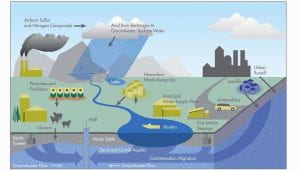 Toxic chemicals in our water is a big issue for many neighborhoods particularly, poor ones. Living in the city of Boston, I’ve noticed and influx of new developments – commercial and residential. With these new developments comes the use for more resources and whether, they are natural or unnatural, the waste seems to end up in the urban waters. The contaminants that flows from one waterway to another such as city streams, rivers, channels or any body of water, ends up in harbors. They range from plastics and medical waste, to trash like alcohol bottles and needles left by party goers and they, ending up in our food, whether seafood or vegetation. How can I affect change?
Toxic chemicals in our water is a big issue for many neighborhoods particularly, poor ones. Living in the city of Boston, I’ve noticed and influx of new developments – commercial and residential. With these new developments comes the use for more resources and whether, they are natural or unnatural, the waste seems to end up in the urban waters. The contaminants that flows from one waterway to another such as city streams, rivers, channels or any body of water, ends up in harbors. They range from plastics and medical waste, to trash like alcohol bottles and needles left by party goers and they, ending up in our food, whether seafood or vegetation. How can I affect change?
